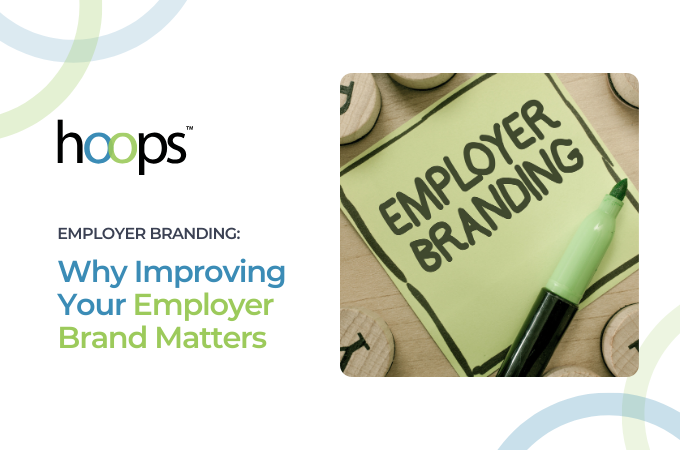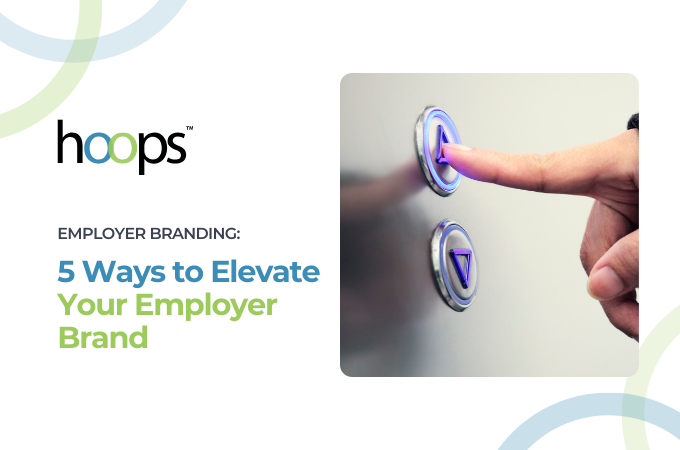Picture this: You're the perfect candidate for a job, but you don't even know it because the job description is so poorly written that it makes watching paint dry sound exciting. Good news: we’re going to help make sure your company doesn’t fall into this category.
In this article, we'll explore why job descriptions are the secret sauce for successful hiring and how to make them an asset instead of a liability.

What are the objectives of the job description?
A job description is like a treasure map, guiding potential candidates to the X that marks the spot of their dream job. Unfortunately, most job descriptions are the HR equivalent of a map full of riddles and ancient hieroglyphics. As a result, your job description ends up being about as useful as a chocolate teapot.
Your job description should include responsibilities, requirements, and qualifications, but we’ll get into that more below. Most importantly, a job description should be an advertisement. It should briefly say what your company is about, and then it should focus on what applicants want to know: what work they’ll do, how much they’ll make, and whether they can actually get the job.
"Don't spend multiple paragraphs ... on why your company has "the best culture out of any company ever in all of history".
Don’t spend multiple paragraphs - or even a full paragraph - on why your company has “the best culture out of any company ever in all of history”. There are three big reasons to avoid talking too much about your company:
- Every company and their subsidiaries do it too, so it probably doesn’t make you stand out as much as you want,
- Whoever’s reading the job description will probably Google you at some point anyway, and (most importantly)...
- This doesn’t tell an applicant anything they actually want to know!
Get to the point with your Job Descriptions. If you’re sitting across from a candidate and they ask about your policy on “gymnastics in the office”, that’s the time you should tell them about the balance beams in every conference room.
OK, let’s get more specific - what are the actual benefits of a good job description?
Benefits of a Good Job Description
1. Increased Job Satisfaction
Remember that warm, fuzzy feeling you got when you found the perfect pair of jeans? That's how a well-crafted job description should make candidates feel.
By being clear and concise about what the job entails, you'll attract more candidates who are genuinely interested in the actual job.
This, in turn, leads to higher job satisfaction and an overall happier workforce because - you know - new hires come to work and actually know what the heck they’re supposed to do! It's like a group hug but with words.
Plus, happy employees are more likely to stick around and recommend your company to others, which is like getting free marketing from a cheerleading squad.
2. Clear Expectations
Nobody likes surprises when it comes to their job duties (unless it involves an unexpected pizza party). A clear job description sets expectations before the first interview even happens. The result? Fewer misunderstandings and far easier performance management. In short, it's the secret ingredient to a well-oiled machine. Think of it as the "terms and conditions" of the job that everyone actually reads (and understands).
By the way - “clear expectations” doesn’t mean “5 pages detailing every expectation this role has ever had and could possibly have for the next 50 years”. Microsoft Word launched 40 years ago, and guess what? As of 2019, more than 50% of the US population is now under 40 years old. Unless your job involves creating an Excel spreadsheet that plays Super Mario, you can probably leave “Microsoft Office competency” off your job requirements.
“Clear expectations” doesn’t mean “5 pages detailing every expectation this role has ever had and could possibly have for the next 50 years”
3. Reduced Time to Hire
Time is money, and when it comes to hiring, you want to save both. When you have a detailed job description, you speed up the hiring process by weeding out the wrong candidates and attracting the right talent.
Think of it as a magical magnet, drawing in the perfect fit while repelling the rest. Plus, a faster hiring process means you can focus on more important things, like planning that pizza party we mentioned earlier.
4. Improved Candidate Matching
A great job description is like a matchmaker, connecting the perfect candidate with their job soulmate. When your job description actually describes the job, you get applicants who are both qualified and genuinely interested in the role.
There’s nothing like fending off employee retention issues and boosting employee engagement by bringing in people who are already super engaged! It's like playing Cupid, but with job applications. And just like Cupid, your job posting should aim for the heart - that is, finding candidates who are passionate about the role.
4b. What Most Companies Miss
You might have read that “Women only apply when they feel they meet 100% of job requirements”. HBR tried to fact-check that stat in 2014 and didn’t replicate it, but they did find something more interesting:
“People who weren’t applying believed they needed the qualifications not to do the job well, but to be hired in the first place. They thought that the required qualifications were…well, required qualifications…
What held them back from applying was not a mistaken perception about themselves, but a mistaken perception about the hiring process.”
Remember that part earlier about keeping things simple and getting that Microsoft Word “requirement” the heck off your Job Description? Turns out that over 40% of men and women won’t even apply for a job because they don’t think they meet the requirements.
40%!! That’s how many candidates you could be throwing away by padding your job description with “nice to haves” instead of actual requirements.
5. Attract Top Talent
Let's face it. Everyone wants to work for the cool kids on the block. Effective job descriptions can help showcase your company's values, culture, and perks, making it more attractive to top talent. Think of it as putting on your company's best outfit and strutting its stuff down the runway of the job market.
Plus, when your company is known for attracting the best and brightest, you'll develop a reputation that'll make others want to join the party too. It's like being the prom king or queen of the corporate world.
One thing to be careful with here - make sure the values, culture, and perks you include are actually things that set you apart (or at least show you offer at least as much as your competitors).
Just because your current employees are jazzed about that new vending machine you guys got last week doesn’t mean it’s going to excite job seekers.
How is a job description prepared?
So, now that you have the benefits of getting your job descriptions right, it’s about time we finally share the basic formula for how to write a better job description. Nail these 8 steps, and you’ll actually stand out on job boards.
- Research similar roles. How can you know if your perks are competitive if you don’t know what your competitors offer? Take a look at their job posts and what they’re listing for responsibilities, requirements, and qualifications.
- Identify your company’s unique needs. If your company is unique because you’re the only one in the state that makes sustainably-sourced hair products for chia pets, that had better make it into your job description.
- Outline the job responsibilities. This should be a brief “day to day” and not a comprehensive list of every interaction an employee might have. If good job performance means an employee has to be on their feet for 5+ hours, it’s the responsibility of the job description to tell them (not the interviewer).
- By the way: Most entry-level positions shouldn’t have educational qualifications included as requirements on their job descriptions. Employee expectations are that they’ll be measured by what they can do, not where they’ve been, so it might be time to update your job description template. This Forbes article is a good place to start for inspiration.
- List required qualifications. After every qualification/skill you write down, ask yourself something like “Would I hire someone without this qualification/skill?”, or “Do we manage employee individual performance based on this?” If the skill doesn’t get someone hired and doesn’t show up on a performance review, it shouldn’t be on your job description.
- Keep it short and simple. You’re going to skim applicants’ resumes, and they’re going to skim your job descriptions. Make it easy for them to see all the important stuff quickly (bullet points are your friend!)

- Be inclusive. It’s not just a “trendy buzzword”, it’s essential to access the entire workforce available to you. LinkedIn recommends focusing on how good a candidate actually is at something instead of how long they’ve been doing it (“performance objectives” over “requirements”, if you want to get fancy).
- Add a dash of personality. Want to know the best way to keep someone’s eyes on your job description? Make it worth reading! A splash of humor that fits your company’s personality is especially effective.
- Include perks and benefits. According to SHRM, Medical, Dental, and Vision are now “table stakes”. Focus on things like work life balance, mental health support, and PTO.
- Proofread and revise. Don’t risk losing applicants because you used the wrong “their/they’re/there”. Services like Grammarly make it too easy to avoid silly mistakes. Don’t make silly mistakes.
WAIT! Remember to include hiring managers throughout this process!
If the person responsible for a new hire has completely different expectations than what’s written in the job description, then it doesn’t matter how good your overall company culture is; everyone’s going to have a bad time.
Conclusion
A well-crafted job description is the secret weapon your hiring arsenal needs. It attracts top talent, increases job satisfaction, sets clear expectations, reduces time to hire, and improves candidate matching. It's the MVP (Most Valuable Paragraphs) of the hiring process. Don’t just take our word for it (even though you should); try taking some time to make a job description you’re proud of and watch the difference it makes.
Want help crafting the perfect job description for your company’s roles?
Click below to talk with the team of experts at Hoops HR!












